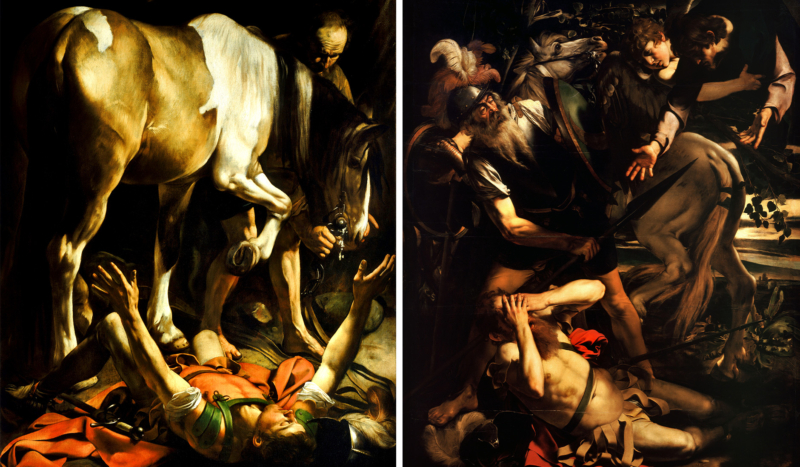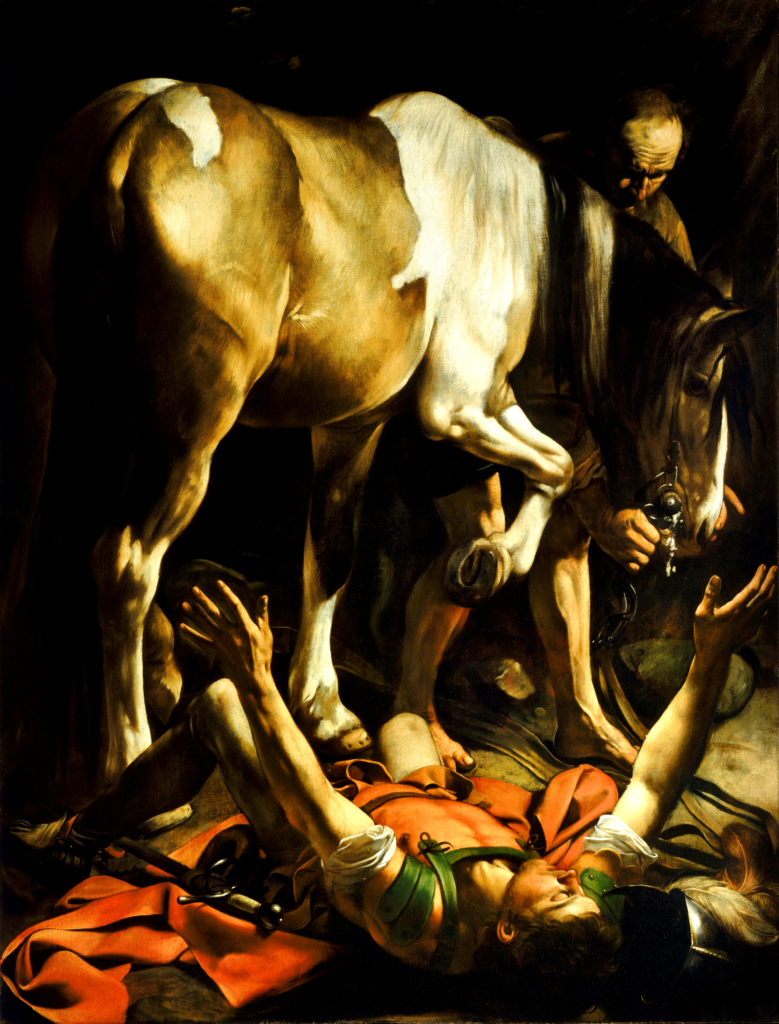
The conversion of St. Paul is perhaps one of the most well-known and dramatic conversion stories.The Bible offers three accounts detailing how Saul, the infamous persecutor of Christian, is stopped in his tracks and transformed.
This famous conversion scene is depicted by the Italian master Michelangelo Merisi da Caravaggio in two works. Both “The Conversion of St Paul” and “The Conversion on the Way to Damascus” illustrate the epic moment when St Paul sees a vision of a blinding light, but with a unique emphasis in each.
Reflecting on these works of sacred art can guide our meditation on the conversion of St Paul and invite us to reflect on our own conversion story and the ways that God speaks to us throughout our lives of faith.
Acts 9:1-6
But Saul, still breathing threats and murder against the disciples of the Lord, went to the high priest 2 and asked him for letters to the synagogues at Damascus, so that if he found any belonging to the Way, men or women, he might bring them bound to Jerusalem. 3 Now as he journeyed he approached Damascus, and suddenly a light from heaven flashed about him. 4 And he fell to the ground and heard a voice saying to him, “Saul, Saul, why do you persecute me?” 5 And he said, “Who are you, Lord?” And he said, “I am Jesus, whom you are persecuting;[a] 6 but rise and enter the city, and you will be told what you are to do.”
“The Conversion of St Paul”

To enter into Visio Divina with this image, close your eyes, quiet your heart, and invite the Holy Spirit to guide you as you reflect on this work of sacred art. Open your eyes and spend time soaking in the painting. When you are ready, read the reflection below to guide you.
Reflect: At first glance, this painting is a frenzy of activity. Carvaggio’s signature style of strong contrast between the light and darkness is on full display. Note first the areas where the is the most dark, and then the areas with the most light. Our eye is drawn to the figure of St Paul at the bottom of the scene. His eyes are covered in fear and shock and the blinding light before him. His helmet has been knocked off and his body is barely clothed – he cannot hide himself from the God who sees all and is in all. His defenses are down and he finds himself in fear and trembling, mouth agape. Only the horse in the scene seems to be aware of the blinding light – clearly focused and attuned to the movement of the divine while the other men in the image remain oblivious.
Place yourself in the scene. What might that blinding light have been like? Have you ever had an experience of God so clear that it stopped you in your tracks?
“The Conversion on the Way to Damascus”

This second version of the scene, by the same artist at a later date, has a much calmer tone. In contrast to the action of the previous work, this painting seems to illustrate St. Paul a few moments after the vision of light begins. We see Paul laying on his back with his arms outstretched – seemingly open to receive the Divine Message. His eyes are closed, and his body is still – he’s completely unaware of the horse being led away nearby, nearly trampling on him. Paul seems to embrace the light pouring onto him. His helmet is still knocked off, his weapon has fallen to his side, and yet here there is peace.
The experience of God is internal to Paul – there is no external sign that something miraculous is occurring. We, the onlooker, are in the shadow of the great light marveling at what could be occurring. Our only clue is the serene expression on Paul’s face.
Recall a time when you have been at peace and embraced the calling of the voice of God. Perhaps it was in front of the Eucharist, or after an encounter with a friend or spiritual guide. What weapons is God asking you to set aside so that your arms can open to embrace his message?

